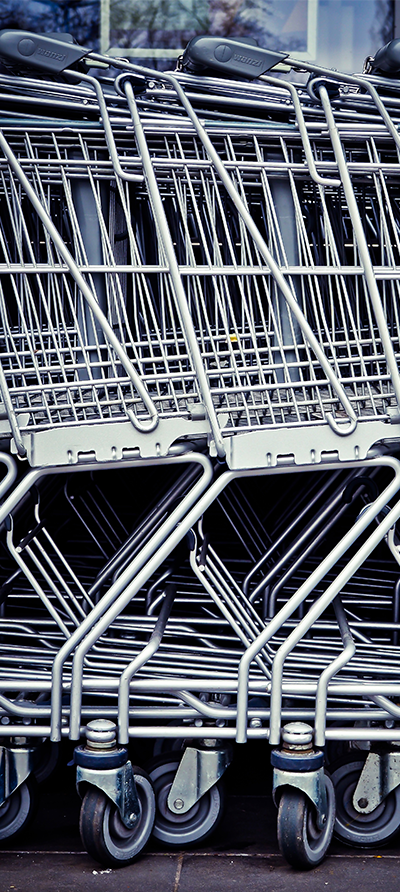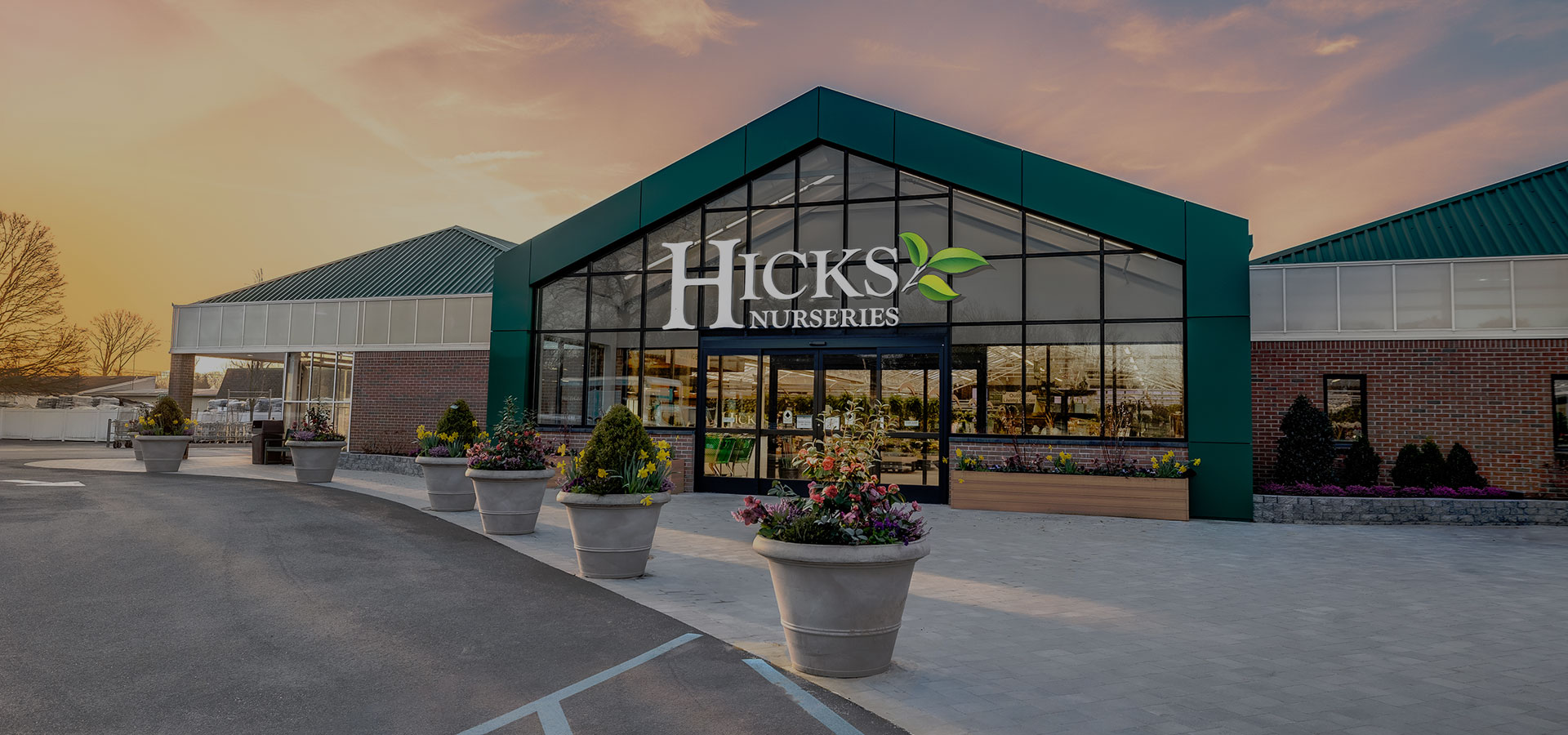[vc_row section_type=”fullwidth” padding_top_multiplier=”” padding_bottom_multiplier=””][vc_column][rev_slider alias=”creative-freedom”][/vc_column][/vc_row][vc_row bg_type=”color” padding_top_multiplier=”3x” padding_bottom_multiplier=”2x” separator_bottom=”round-split-separator” separator_bottom_color=”#faa633″ bg_color=”#f8a541″][vc_column column_custom_position=”yes” width=”1/2″ heading_color=”light” font_color=”#ffffff”][movedo_title heading_tag=”h2″ heading=”h1″ increase_heading=”160″ custom_font_family=”custom-font-1″ animation=”grve-zoom-in”]32 million Americans head to the grocery store every day.[/movedo_title][/vc_column][vc_column column_custom_position=”yes” position_top=”2x” width=”1/2″ font_color=”#ffffff”][vc_column_text text_style=”subtitle” animation=”grve-zoom-in” animation_duration=”slow”]
That’s 1 in 7 consumers shopping at any given moment. Multiply the 1.5 trips taken per week and the average 41 minute trip it takes to shop, and that’s over 53 hours per year consumers are spending in the grocery store.
So, is Amazon really leading its competitors in the grocery industry? In terms of loyalty, we think it might.[/vc_column_text][/vc_column][/vc_row][vc_row bg_type=”color” padding_top_multiplier=”2x” padding_bottom_multiplier=”6x” separator_top=”curve-right-separator” separator_top_color=”#faa633″ separator_bottom=”curve-left-separator” bg_color=”#faa633″][vc_column column_custom_position=”yes” position_top=”1x” position_bottom=”5x” heading_color=”light” font_color=”#ffffff”][movedo_title heading=”h2″ line_type=”line” line_color=”orange” animation=”grve-fade-in-up”]Today’s Consumer[/movedo_title][vc_column_text]When it comes to the reality of today’s consumer, loyalty has diminished. Shoppers are falling out of love with traditional rewards; over 40% go to more than one store to get all the things they need. And, while price and promotion are the most influential factors for where consumers decide to buy, loyalty today requires not only AI (artificial intelligence) but also EI (emotional intelligence). You can have all the data available to understand brand affinities, category engagement, visit cadence, cart contents, and lifestyle choices, but if you’re not building in an in-store connection it’s a fruitless effort of analysis.[/vc_column_text][movedo_empty_space][movedo_title heading=”h1″]What can be done to improve the relationship between the consumer and the store?[/movedo_title][movedo_empty_space][/vc_column][/vc_row][vc_row padding_top_multiplier=”3x”][vc_column heading_color=”dark”][vc_column_text]As forward-thinking strategists and designers, we’re always looking ahead to predict what consumer behaviors and cultural trends tell us about what’s to come. Considering the current state of the landscape, we see a future of multiple models: consumer-centric concepts based around a variety of spending behaviors and lifestyle needs. These needs have cultivated a transformative consumer journey, but in a world where consumers search for cheaper, better options, a familiar question continues to resurface.[/vc_column_text][/vc_column][/vc_row][vc_row][vc_column][movedo_divider][/vc_column][/vc_row][vc_row bg_type=”color” padding_top_multiplier=”3x” padding_bottom_multiplier=”3x” bg_color=”#ffffff”][vc_column column_custom_position=”yes” position_bottom=”minus-1x” css=”.vc_custom_1521644259981{margin-top: -10% !important;}”][movedo_title heading=”h2″ line_type=”line” line_color=”orange” animation=”grve-fade-in-up”]A Wellness Destination[/movedo_title][vc_column_text]The global wellness industry is a $3.7 trillion market. Emphasis on the proactive maintenance and improvement of health and well-being calls for consideration of a concept where food is the fuel and a wellness solution. How often is a trip to the gym followed by a stroll through the grocery store? What we see is a holistic-food experience beyond consumption. Here, health is connected through trainers, nutritionists, dietitians, and educational forums. The grocery store becomes a beacon of advice related to all things food, information, and equipment. With central access to the same information, the overall infrastructure enables dietitians to craft meal plans based on consumer purchases, trainers around fitness goals, and health experts armed to help guide individuals through their most desired lifestyle.[/vc_column_text][/vc_column][/vc_row][vc_row heading_color=”light” section_full_height=”fullheight” bg_type=”hosted_video” bg_image=”27035″ color_overlay=”dark” opacity_overlay=”40″ bg_video_mp4=”https://www.chutegerdeman.com/wp-content/uploads/2018/03/opt-588729405.mp4″][vc_column column_custom_position=”yes” width=”1/2″][movedo_empty_space height_multiplier=”2x”][movedo_title heading=”subtitle-text” increase_heading=”160″ custom_font_family=”custom-font-1″]Brands that will have the biggest impact are the ones[/movedo_title][movedo_title heading=”subtitle-text” increase_heading=”140″]that will make it accessible to more people to live a balanced life in mind, body, and soul.[/movedo_title][movedo_title heading=”small-text” align=”center”]-Katie Guhen, The Wellness Report[/movedo_title][movedo_empty_space][/vc_column][vc_column width=”1/2″][/vc_column][/vc_row][vc_row bg_type=”color” padding_top_multiplier=”3x” padding_bottom_multiplier=”3x” bg_color=”#ffffff”][vc_column column_custom_position=”yes” position_top=”2x” position_bottom=”minus-1x” css=”.vc_custom_1521657418900{margin-top: -10% !important;}”][movedo_title heading=”h2″ line_type=”line” line_color=”orange” animation=”grve-fade-in-up”]A Pop-Up Appeal[/movedo_title][vc_column_text]The proliferation of pop-up retail has gained industry recognition over the years with brands and retailers interested in short-term leases, and a way to test concepts before commitment to scale. Generating excitement, building awareness, and reaching new customers are just a few reasons why these concepts have been a success.
Enter the opportunity for the center store to truly “pop” with temporary activation spaces for brands. Creating experiential elements within the center store gives grocers and CPG brands the opportunity to drive foot traffic in aisle. We believe rotating through a set of featured brands to help encourage, increase, and engage shopper curiosity and to instill a sense of allurement.[/vc_column_text][vc_row_inner][vc_column_inner width=”1/2″][vc_column_text]Recently, snack food brand Cheetos, opened The Spotted Cheetah restaurant in New York with a cheese-tastic, one-of-a-kind menu. Crafted by celebrity Chef Anne Burrell, the menu included[/vc_column_text][/vc_column_inner][vc_column_inner width=”1/2″ css=”.vc_custom_1521675131766{margin-right: -30% !important;padding-top: 12px !important;}”][movedo_title heading=”subtitle-text” increase_heading=”140″ margin_bottom=”1%”]”I wouldn’t call this a fad,
it’s another retail channel.”[/movedo_title][movedo_title heading=”small-text”]-Debbi Hauss, Editor of Retail Touchpoints[/movedo_title][/vc_column_inner][/vc_row_inner][vc_column_text]Cheetos Crusted Chicken Milanese and Flamin’ Hot and White Cheddar Mac n’ Cheetos. Imagine bringing a modification of that cheesy concept in-store, giving consumers an experiential way to interact with the product, while also thinking more creatively about their eating. Cheetos become a whole lot more than just a snack.[/vc_column_text][movedo_empty_space][vc_row_inner][vc_column_inner width=”1/2″][movedo_single_image image=”25635″][/vc_column_inner][vc_column_inner width=”1/2″][movedo_single_image image=”25636″][/vc_column_inner][vc_column_inner][vc_column_text]
Google Images
[/vc_column_text][/vc_column_inner][/vc_row_inner][movedo_empty_space][vc_column_text]This pop-up potential is not exclusive to food; instead, it’s about the education, exploration, and entertainment behind the experience. Catering to shoppers’ desire for customization, skincare brand St. Ives recently launched a temporary “Mixing Bar” in Soho to invite guests to see, smell, touch, and create custom St. Ives body scrubs and lotion. As a legacy brand, this type of experience–when brought in-store, even temporarily–could encourage even the youngest of consumers to consider a new skincare solution.[/vc_column_text][movedo_empty_space height_multiplier=”custom” height=”1.8x”][vc_row_inner][vc_column_inner width=”1/2″][movedo_single_image image=”25637″][/vc_column_inner][vc_column_inner width=”1/2″][movedo_single_image image=”25638″][/vc_column_inner][vc_column_inner][vc_column_text]
Google Images
[/vc_column_text][/vc_column_inner][/vc_row_inner][/vc_column][/vc_row][vc_row][vc_column][movedo_divider][/vc_column][/vc_row][vc_row padding_top_multiplier=”” padding_bottom_multiplier=”3x”][vc_column column_custom_position=”yes” position_bottom=”minus-1x”][movedo_title heading=”h2″ line_type=”line” line_color=”orange” animation=”grve-fade-in-up”]Membership Model[/movedo_title][vc_column_text]People are responding to simpler models like membership services. The old school method of big-box memberships gave individuals the freedom to shop for what they wanted, but consider a model that uses membership information to understand not only individual consumer purchases, but also community purchases. In essence, the store is stocked with product not based on what the retailer wants to sell; instead, the product is driven by consumer wants and needs. Shoppers are helping to inform future purchasing behaviors, inevitably resulting in a more efficient model. Using predictive analytics through the grocer can suggest similar products in the attempt to continuously expose consumers to new items. And, as “members” this model allows them to also implement an automated checkout experience.[/vc_column_text][movedo_empty_space][vc_row_inner][vc_column_inner width=”1/3″ css=”.vc_custom_1521645464176{padding-top: 7% !important;}”][movedo_title increase_heading=”120″ align=”center” margin_bottom=”-1%”]”[/movedo_title][movedo_title heading=”subtitle-text” increase_heading=”120″]Selling food won’t be enough . . . shoppers want information and an experience. They want the retailer to do more curating. Help them make the best choice. Give guidance.[/movedo_title][movedo_title heading=”small-text”]-David Fikes, VP Communications, FMI[/movedo_title][/vc_column_inner][vc_column_inner width=”2/3″][vc_column_text]Beyond the selection and simplified shopping, is an introduction to a level of true, relevant customer service coming to fruition. We’re not suggesting an employee-free environment; instead, a grocery retail experience that allows employees to best serve their shoppers. For years, apparel retailers and department stores have created loyalty through the one-on-one elements. Why couldn’t it work for grocery? A place where customers could schedule a trip, alert associates of upcoming events (like an anniversary or birthday), and be presented with suggested menus and pairings. With a shopping history at hand, it also allows them to reach out with personalized communications. This type of specific allocation creates a deeper connection; it’s your neighborhood market feel, informed by consumer data.[/vc_column_text][/vc_column_inner][/vc_row_inner][/vc_column][/vc_row][vc_row bg_type=”image” bg_image=”25625″ color_overlay=”dark” opacity_overlay=”30″ padding_bottom_multiplier=”3x”][vc_column width=”1/2″ css=”.vc_custom_1521551199679{margin-left: -30% !important;}”][/vc_column][vc_column column_custom_position=”yes” position_top=”1x” position_bottom=”2x” width=”1/2″ heading_color=”light” font_color=”#ffffff” css=”.vc_custom_1521658398104{margin-right: -50% !important;margin-left: -10% !important;}”][movedo_title heading=”subtitle-text” increase_heading=”120″]
44% of consumers say
[/movedo_title][movedo_title heading=”subtitle-text” increase_heading=”160″ custom_font_family=”custom-font-1″ align=”right” margin_bottom=”-1%”]they will likely repeat after a personalized shopping experience.[/movedo_title][movedo_title heading=”small-text” align=”right”]
-Segment
[/movedo_title][/vc_column][/vc_row][vc_row bg_type=”color” padding_bottom_multiplier=”3x” bg_color=”#ffffff”][vc_column column_custom_position=”yes” position_top=”2x” width=”1/2″][movedo_title heading=”h2″ line_type=”line” line_color=”orange” animation=”grve-fade-in-up”]AI Agnostic Shopping[/movedo_title][vc_column_text]Undeniably our lives are hyper-connected with smart devices. What we see in the future of grocery retail is an experience where traditional home assistants join forces with the in-store experience. The expectation shouldn’t be shoppers screaming, “Hey, Alexa.” What we perceive the AI experience to be combines a consumer’s at-home experience, shopping behavior, and community store offer. Most smart home technologies often modify the vast selection and recommend single products, cutting down the exposure for brands.[/vc_column_text][/vc_column][vc_column column_custom_position=”yes” position_top=”2x” width=”1/2″ css=”.vc_custom_1521657505059{padding-top: 12% !important;padding-right: 15% !important;padding-bottom: 15% !important;padding-left: 15% !important;}”][movedo_single_image image_mode=”portrait” image=”25660″][/vc_column][vc_column column_custom_position=”yes” position_top=”2x” position_bottom=”2x”][vc_column_text]Through cart technologies, mobile integrations, and digital department kiosks, the store becomes a physical manifestation of shopper behavior with each technology working together and mining individual data real-time. Here, shoppers can pull up their recent purchases, access current grocery lists, plug in a budget to calculate as they shop, and easily navigate the store to find where specific products are located. Shoppers are free to (virtually) ask product and produce questions, and even request help to compile complete meals. Accessing a recipe that considers unique cuisines, calories per serving, and dietary restrictions like dairy or gluten-free are easily achievable in-store, in minutes. An AI agnostic experience driven by the grocer opens the door for connection.[/vc_column_text][/vc_column][/vc_row][vc_row][vc_column][movedo_divider][/vc_column][/vc_row][vc_row bg_type=”color” padding_bottom_multiplier=”3x” bg_color=”#ffffff”][vc_column][movedo_title heading=”h2″ line_type=”line” line_color=”orange” animation=”grve-fade-in-up”]Daypart by Design[/movedo_title][vc_column_text]For years, dayparts have long been the cornerstone upon which many restaurants have built their sales and marketing strategies. The traditional breakfast, lunch, and dinner served as constants in a quickly-changing-consumption world. Fast-forward to today, a time when consumers entertain micro meal moments, finding themselves grazing their way through the day. It’s not uncharacteristic to find consumers swapping a caffeinated soda for their morning coffee, or eating a breakfast burrito as an evening entrée.[/vc_column_text][movedo_empty_space][vc_row_inner][vc_column_inner][vc_column_text]But, has the traditional grocery store shifted to meet these demands? While overall store layouts have evolved over the years, the center store has maintained relatively stagnant… well, in the middle of the store. Cross merchandising opened the door to solutions selling, but a large percentage of store sales continue to be captured through the perimeter. We see a future for driving aisle disruption–a place where CPG brands can shift their position (literally).[/vc_column_text][/vc_column_inner][/vc_row_inner][movedo_empty_space][vc_row_inner][vc_column_inner][vc_column_text]By utilizing a mobile model, gondolas, coolers, and display cases can flex and move based on the time of day. By looking at shopper patterns and purchase history, retailers can identify opportunities for feature placement. Imagine a store where the cereal aisle meets seasonal fruits, milk, and juice in the mornings; in the evenings, boxed pasts are presented with a selection of beef and poultry, complimented by items from the bakery. It’s the physical representation of a meal-kit, but giving the consumer the power to decide.[/vc_column_text][/vc_column_inner][/vc_row_inner][movedo_empty_space height_multiplier=”custom” height=”1.5x”][vc_row_inner][vc_column_inner width=”1/2″][movedo_single_image image=”25680″][/vc_column_inner][vc_column_inner width=”1/2″][movedo_title increase_heading=”120″ align=”center” margin_bottom=”-1%”]”[/movedo_title][movedo_title heading=”subtitle-text” increase_heading=”120″]Daypart targeting can be used not only to create specific consumption niches, but also expand, and redefine consumption occasions.[/movedo_title][movedo_title heading=”small-text”]-Tanvi Savara, Consumer Insight Analyst, Canadean[/movedo_title][/vc_column_inner][/vc_row_inner][/vc_column][/vc_row][vc_row][vc_column][movedo_divider][/vc_column][/vc_row][vc_row padding_top_multiplier=”2x” padding_bottom_multiplier=”3x” separator_bottom=”curve-right-separator” separator_bottom_color=”#faa633″][vc_column column_custom_position=”yes” position_bottom=”1x”][movedo_title heading=”h2″ line_type=”line” line_color=”orange” animation=”grve-fade-in-up”]A Perimeter Place[/movedo_title][vc_column_text]The connection between online and offline retail has been a hot industry topic for the last several years, and still growing. While we believe in an integrated customer journey, we think there’s also an opportunity to make each uniquely distinct within grocery retail. A model that encourages increased traffic in-store and online.
What we predict is a perimeter store model defined by community, and a center store world fulfilled by subscription. The new space is filled with produce from local farmers, featuring community rooftop gardens tended to by the consumers, and a rotating selection of chef spotlights for all your in-store and on-the-go dining needs.
But, don’t be confused… this is not a model where the middle is removed. Center store brands can stop battling for shelf space, and now just become a replenishment selection in the grocers’ online store. The everyday items can be shipped to the shopper’s door, while they continue to shop for the things they desire to touch, see, and smell.[/vc_column_text][movedo_empty_space][/vc_column][/vc_row][vc_row bg_type=”color” padding_bottom_multiplier=”3x” bg_color=”#faa633″][vc_column heading_color=”light” font_color=”#ffffff”][movedo_empty_space][vc_column_text]While Amazon is aggressively encouraging CPG brands to activate their direct-to-consumer strategy, the real opportunity lies within the relationship between brand, retail, and shopper. Online will always be convenient, but retail owns convenience. Now that experience is augmented by technology, brands have the opportunity to create long-lasting relationships both in store and out. Try shaking off the Amazon focus, and create prime experiences that your shoppers will share, post, and want to be a part of for years to come.[/vc_column_text][/vc_column][/vc_row]





